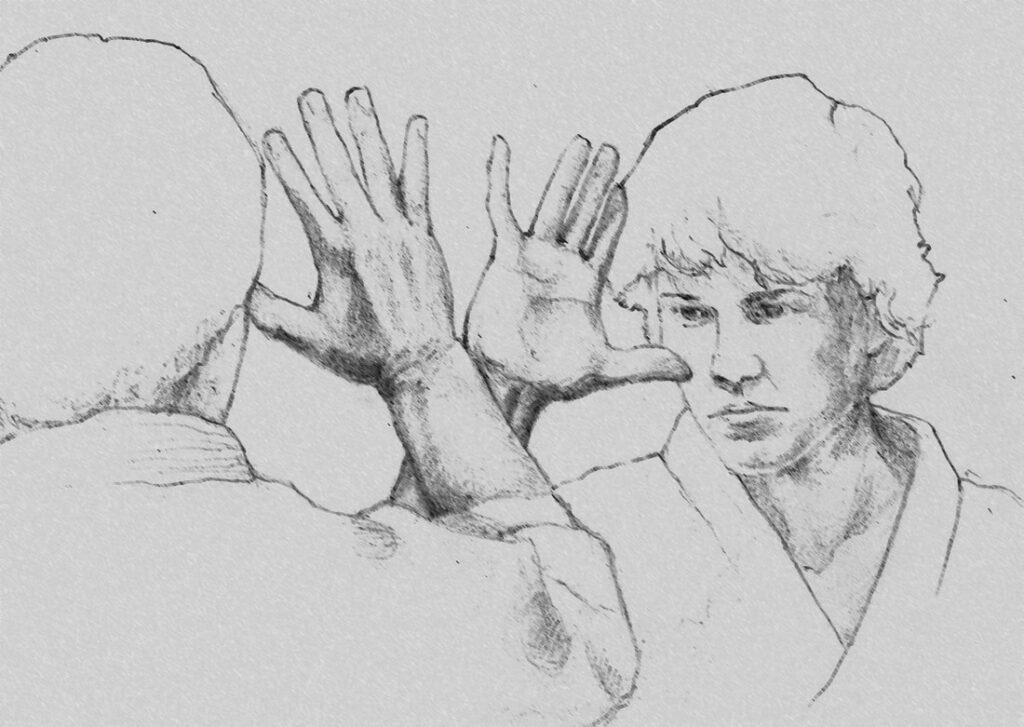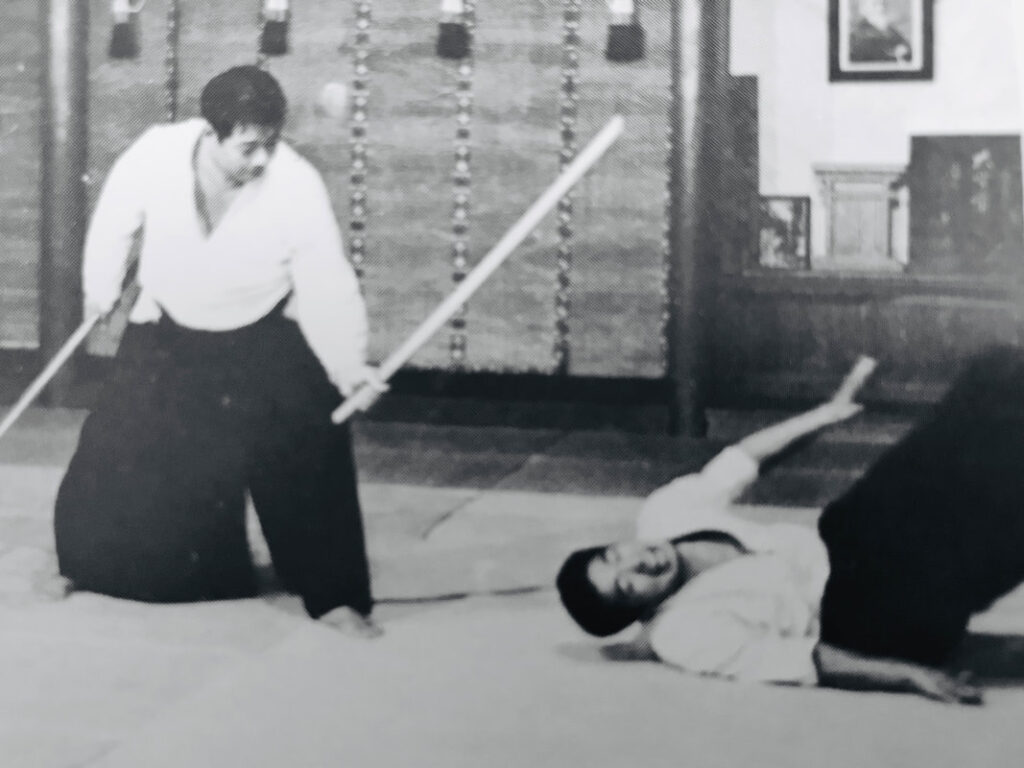by Hoa Newens

Zanshin is the soul of martial arts
In the Budo environment, zanshin has traditionally been linked with the moment immediately following the execution of a technique, such as the release of an arrow in Kyudo, the completion of a Karate kata, the completion of a lethal cut in Iaido, the completion of a throw in Aikido. Experience has shown that these are the most vulnerable moments of a warrior, and zanshin reminds the warrior to not let down his guard yet.
Zanshin (残心)is best translated as “lingering awareness” and refers to the state of alertness that must be maintained even when the risk or danger appears to have subsided. It also means that the alertness is always on, irrespective of the degree of risk. It is a state of consciousness that has vast applications in life.
In general, martial arts can be viewed as movements performed with zanshin for control purpose. Recall the story of the tea master with no sword fighting skill who successfully warded off a samurai by adopting a solid defense stance with zanshin? That’s right; the same zanshin used in Chado can be used for martial purpose. Conversely, without zanshin, there is no martial art.
Zanshin makes the technique effective, irrespective of the purpose. The most well-thought out technique or tactic executed without zanshin will not have the desired effect. With zanshin, intense awareness allows the subject to assess circumstances accurately and bring to bear all resources available to accomplish the action. The action can be as simple as placing the tenth pebble on a vertical stack of nine.
A hit on the target is the result of the continuous focus of consciousness; the technique is only of secondary importance. You might have seen Miyoko Shida Rigolo on the Youtube video that shows her calm concentration during a balancing act. Watch it then imagine that you are in a fight facing Ms. Rigolo holding a sharp blade.
Zanshin is internal
An average person may display zanshin spontaneously while under extreme danger in order to survive. However, such person would not be able to replicate the feat under normal circumstances. The extreme conditions act as a catalyst that gives a temporary boost of awareness and energy to accomplish the survival act. This temporary change in awareness is caused by external factors and is not part of the normal makeup of the person. On the other hand, a seasoned martial artist is perpetually in a state of relaxed alertness, which can be ramped up instantly into a state of zanshin, at will; such as during a training encounter.
Zanshin is not high alert
Lest we become hyper-stressed we must understand that zanshin is not the same as the fear or fright that leads to hyper-arousal of the body before a fight-or-flight response. Zanshin is pure consciousness being aware of its environment; there is no mind involvement, no judgment of any kind, hence no fear. There is no stress and hardly any tension. There are calmness and acceptance. Therefore, practicing zanshin is not the same as the state of mind when one prepares to deal with a crisis.
What happens in zanshin?
During zanshin, the subject is totally focused on the present moment; that is, consciousness that would normally be consumed by thoughts and worries regarding the future or thoughts and feelings about the past, is suddenly made available and concentrated on a single instant. This moment.
In this timeless moment (no past and no future), our consciousness regains its wholeness, as well as its natural access to universal consciousness. In that one moment our energy is abundant and fluid, allowing us to draw from resources beyond our normal individual physical and mental capacities. If we know the technique and are willing to receive, we can avail from these resources.
The problems are, first, these timeless moments are rare; second, most of us are inhibited by unfamiliarity with these powerful resources; and lastly, we do not know how to receive and use these resources.
How to increase zanshin?
As alluded to in the discussion above, the answer is a three-pronged approach.
Be in the moment. How often are you clear-headed, lighthearted and bubbling with joie de vivre? Most of the time we are saddled with thoughts and emotions related to past events or future worries. We need to let go of these thoughts and feelings and practice being present, in the moment. Thoughts and emotions lock up our energy and create traffic jam in our energetic grid when we need to rally the troops urgently. Here is a simple practice: close your eyes, be completely still, let go of all thoughts and emotions, and feel your body and feel alive. The more we practice this presence, the more we increase the occurrences of timeless moments that open portals to our original Source.
Have no fear of losing your mind. In those timeless moments, we lose our sense of self. Fear will naturally set in because our sense of self is comforting. Our normal sense of self (our ego) is derived from our continuous identification with our thoughts and emotions since the beginning of our life. Without my accumulated thoughts and emotions, what am I? Try this: sit still, hold on to no thoughts and let go of all emotions, and see how long you can hold this state. A distracting thought might be “This is a waste of my time” or “This doesn’t make any sense”. Our ego will come up with all kinds of excuses to let the mind return to its usual monkey business. To realize the power of the present moment, we must trust firmly that letting go temporarily of the thinking mind and of our feelings is liberating. Have no fear of losing your mind. Practice a little every day to get used to these no-mind instants. [For additional discussion on the mind refer to my essay Mind and Mutiny published in the Awase newsletter in July 2018.]
Ride the flow and go forth. When we have conquered the fear of losing our mind and our feelings, a large portion of our consciousness is released and becomes available to face the present. When facing the moment, this chunk of additional consciousness captures all the glorious details of life and transforms into increased awareness that in turn creates clarity. The path forward is unequivocally clear. Concomitantly, the boosted consciousness links up with the universal consciousness and automatically creates the favorable conditions and resources that we need. Whatever comes to us at that moment, we need to grab it and run with it, trusting completely that it serves our needs, even though it may not make any sense yet. Carpe Diem. In fact, it is imperative that we not let the thinking mind interfere with the flow at this critical juncture.
Martial artists use this three-pronged approach naturally during high-level training such as jyu-waza or randori.
Zanshin in daily life
Beside martial arts, other ways to practice zanshin are derived from meditation; all meditation practices eventually lead to the state of expanded consciousness embodied in zanshin. The more popular methods are derived from the Zen tradition and are built into arts in Japan, such as Sumie, Ikebana, Chado, etc. and all the Budo. The Chinese internal martial arts and Taoist arts also cultivate zanshin, for example through the Zhan Zhuang (pole standing) practice.
However, as explained above, opportunities for zanshin practice abound in daily life. One can practice any moment by focusing intently on the action at hand, allowing no gap in concentration. For example, when walking, consciously retract one leg as you simultaneously extend the other leg, feel your feet landing and rolling on the ground, feel your arms swinging. At other times, even when there is no outward action, such as during moments of stillness, one should remain fully conscious of the body and the mind, tracking any movement (thoughts, sensations, feelings or emotions) as a witness. Such daily practice, even if just for ten minutes, will gradually lead to the state of zanshin.

Zanshin in Aikido
The approach described above applies to all aspects of our daily life. In Aikido training, we have several tools that help to enhance zanshin.
Code of etiquette. Strict application of etiquette in the dojo and use of proper rei in our relations with other Aikidoka are the easiest ways to practice zanshin.
Connection with training partner. Maintaining continuous connection with our training partners physically and energetically on the mat requires zanshin and makes our techniques more effective and safer. The connection begins at the moment we bow to our training partner and is maintained through the engagement until we bow to disconnect. Remember not to disconnect immediately after you have executed a technique. Note how Saito Morihiro Sensei finished his techniques in his photos or videos.
Ki no nagare, Randori and Embu. These are specialized practices that require solid zanshin. Any deficiency in zanshin is reflected immediately in these trainings. Use them to test your zanshin occasionally.
For now, stop reading and stop thinking; take a deep breath, feel your body full of vital energy. Feel the joy of this moment, taste zanshin.
Hoa Newens
September 27, 2019

Leave a Reply